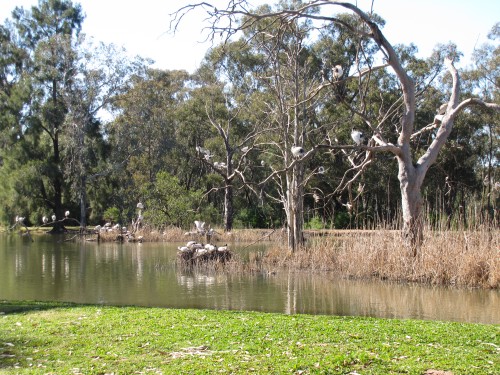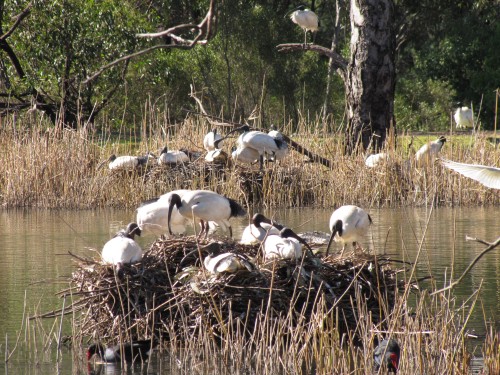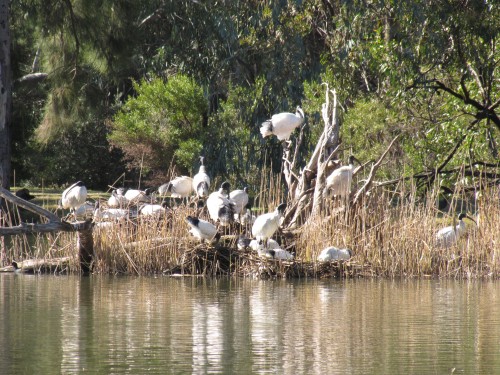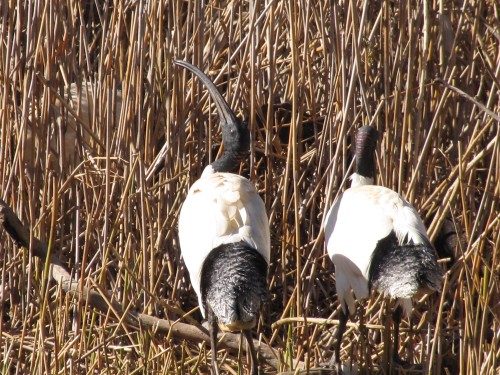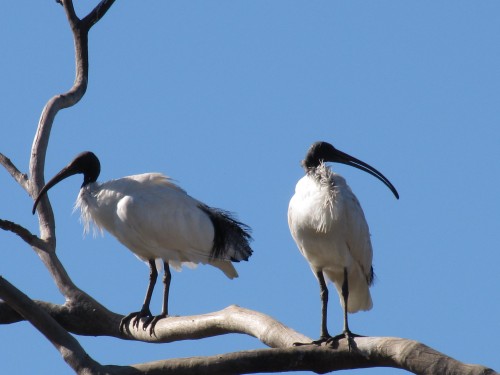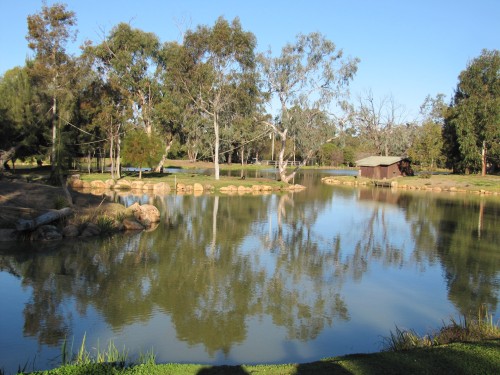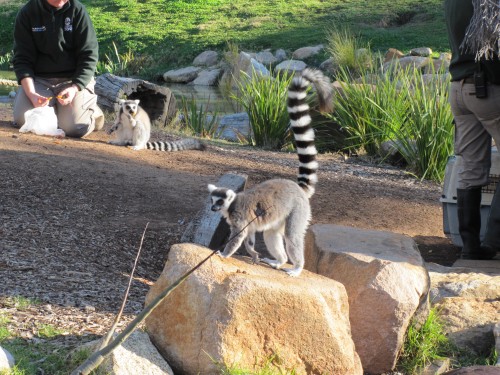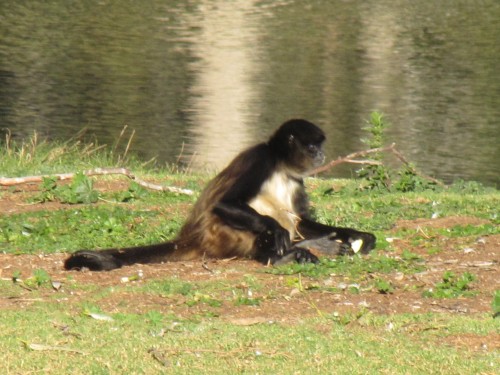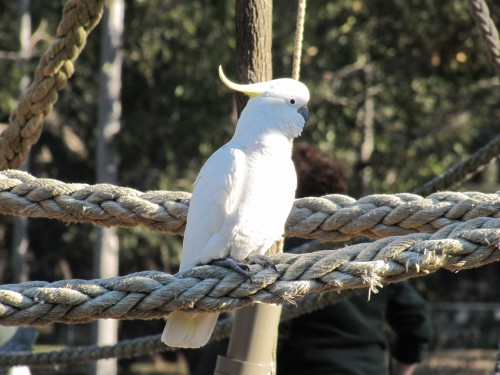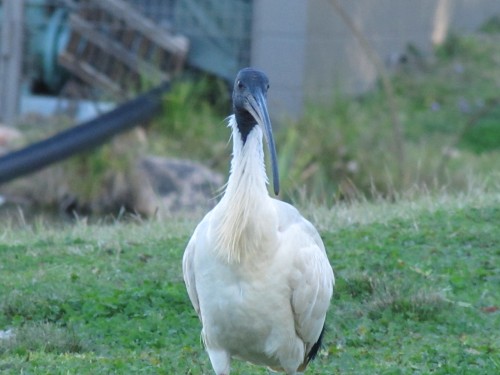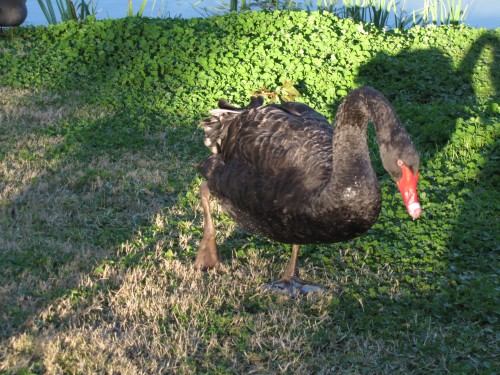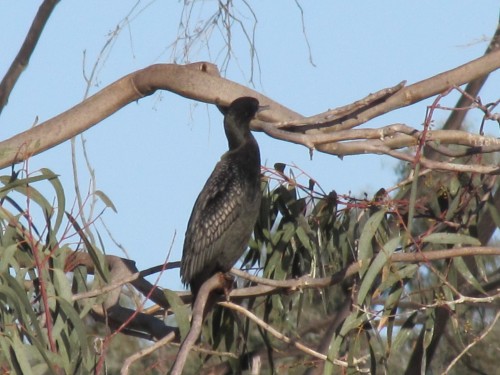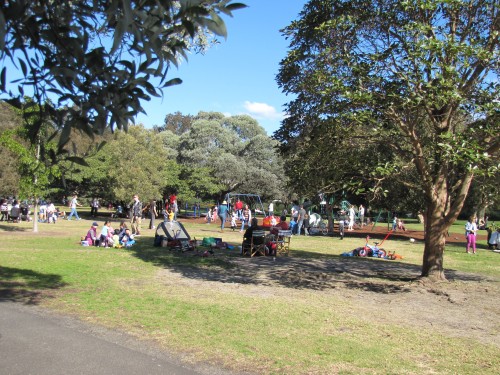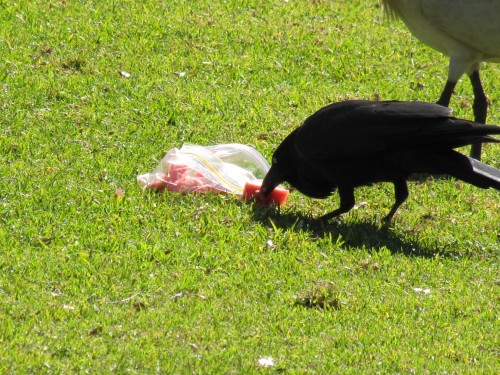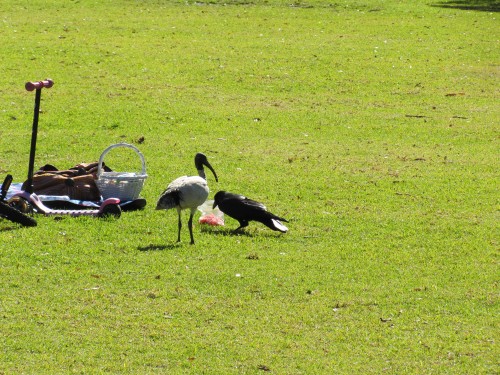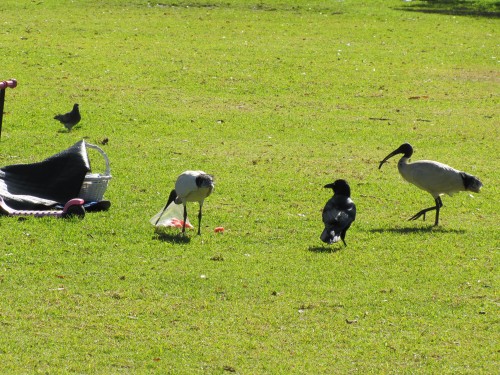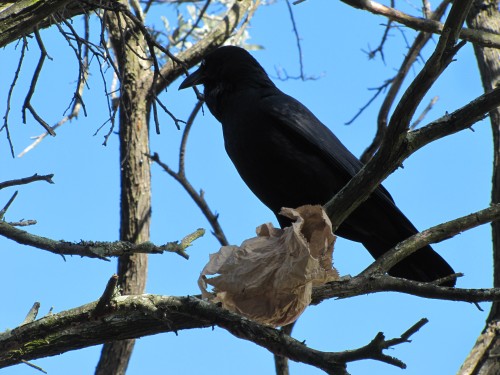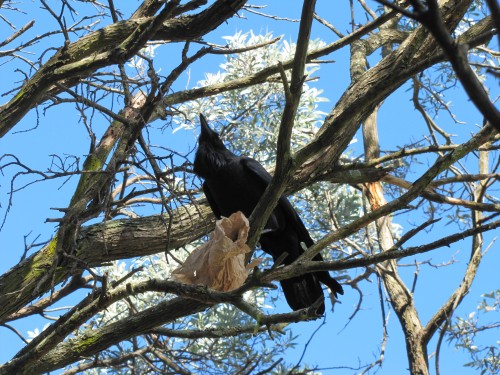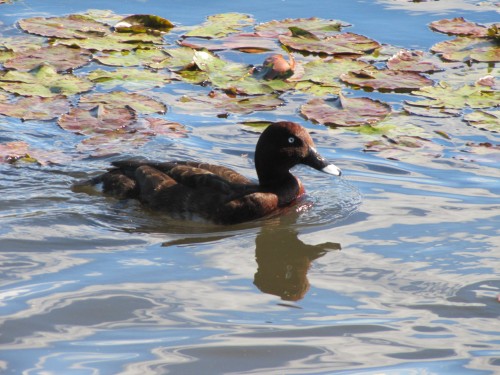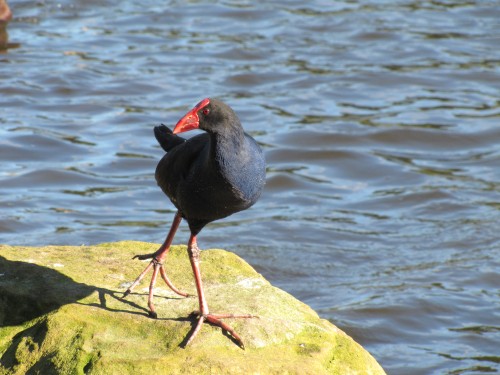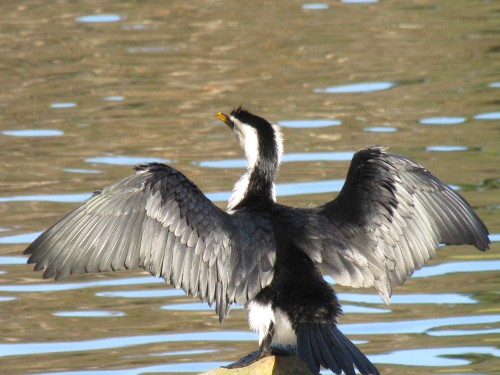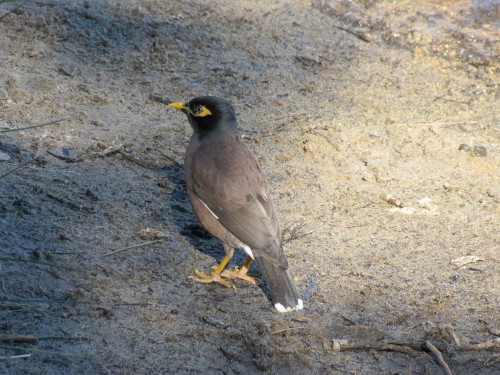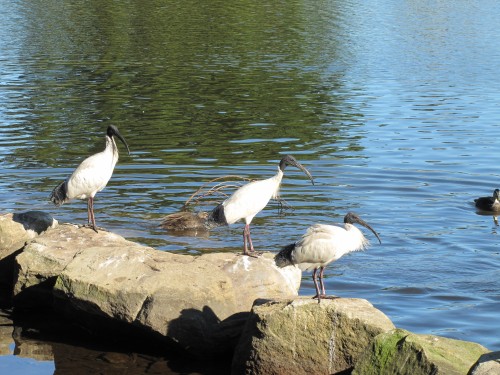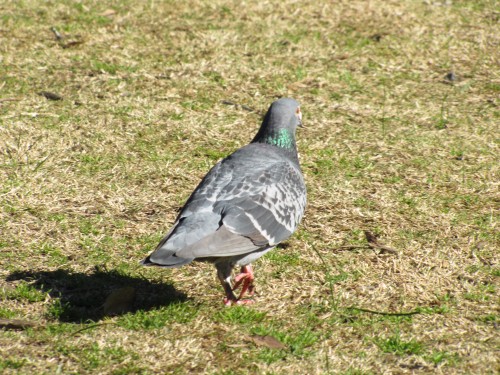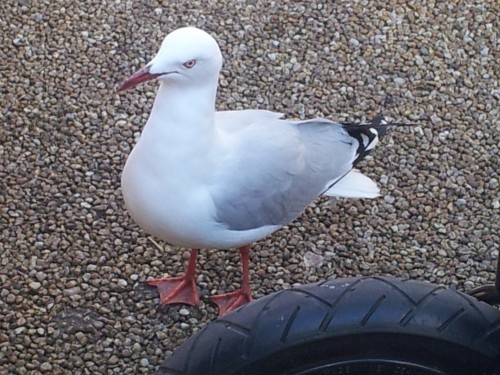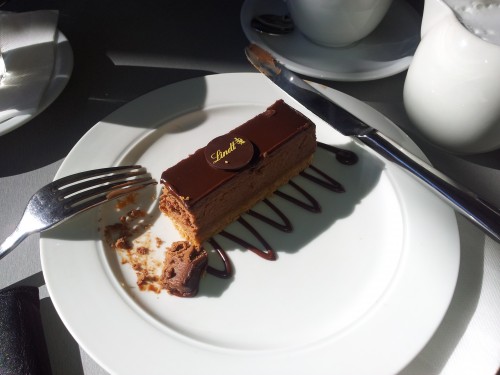White Ibis at Dubbo Zoo
Some time ago I wrote a few posts here on our visit last year to the Western Plains Zoo in Dubbo. This zoo is an open range zoo which complements the Taronga Park Zoo in Sydney. As we had never been to this zoo before we were looking forward to our visit over two days – tickets are valid for two days which I think is a great idea. One needs two days to see everything but we only had an afternoon and a part day due to a funeral of a family member. Our planned visit to this area fortuitously coincided with the family getting together.
For my readers who may not know much about this zoo, it was established many years ago by Taronga Zoo. It is situated a few kilometres south of the rural city of Dubbo which is on the western plains of New South Wales about a five hour drive from Sydney. The animal enclosures are quite large and visitors are able to drive their cars from one enclosure to the next. Going via bicycle is another popular method and these can be hired for the day, or you can bring your own. Some energetic people even walk from one enclosure to the next.
On our visit we stopped to have lunch by one of the lakes which have been built in the zoo property. This lake has become a well occupied wetlands area. My interest was mainly in the birds present, but I am sure that many other creatures inhabit this wetland. The most prominent bird present was the White Ibis. In today’s photos I have shown some of them on nests in the reeds as well as general shots of the colony.
Further reading: all are links to more articles and photos taken at the Western Plains Zoo
Birds and animals – Western Plains Zoo
After leaving Sydney and our family with some sense of sadness – the grandchildren wanted us to stay – we travelled to Dubbo. As we entered the rural city we unfortunately had a little bingle in our near new car. Trying to negotiate a round-about I side-swiped another car. I must admit I was at fault; I was in the wrong lane. Happily no-one was hurt, just a little shaken, and both cars were still drivable. I exchanged details with the other driver for insurance claims and we were on our way again 20 minutes later. (Postscript: back home some weeks later the car looks like new again. Our local repairer did a great job.)
By the time we had settled into our cabin in the caravan park it was dark, so any bird watching in the area had to wait. We had a delightful dinner with cousins of my wife that evening, and next morning we gathered at the local crematorium for the funeral of a cousin. While it was a sad occasion, we were pleased to be able to catch up with so many of the family. After lunch together we had a few hours of daylight left, so we drove the short distance to the Western Plains Zoo on the southern edge of Dubbo. This zoo was set up many years ago as an adjunct of Taronga Zoo in Sydney. We had long desired to visit but this was our first opportunity.
We didn’t enter the zoo proper – just the picnic area near the entrance. There is no charge to visit this lawned area. The extensive picnic grounds look over an artificial lake (see top photo above). There are two islands in the lake, each one home to some animals. The closest caters for a family of Ring-tailed Lemurs (see photo above) while the other is home to a group of Black-handed Spider-monkeys (see photo below).
It was feeding time for the monkeys and lemurs, so we sat there in the calm, balmy evening light watching the animals on the islands. As we watched I was able to get a few photos of some of the local bird life, including the Sulphur-crested cockatoo (see photo below) who was obviously a regular visitor to the islands to benefit from any food scraps the animals might overlook. The ropes in the photo are actually there for the entertainment of the lemurs. They also make good perches for a cockatoo.
Just below the cockatoo was a Purple Swamphen, also on the lookout for a free handout. These two birds are wild birds which have come in to the zoo grounds because there is abundant food for the taking. Both probably also check out the picnic grounds for food scraps left behind by people visiting.
The Australian White Ibis (see below) is another species which takes over picnic grounds in search of an easy meal. This individual was alone at the time, but when the zoo is crowded it is probably joined by many more. On our visit the next day we saw large numbers of this species, some of them nesting in the grounds of the zoo (I will show photos of this on another post soon).
In some parks in many places in Australia, the White Ibis has become a serious pest species, harassing people having a quiet picnic by snatching food from them, even to the point of jumping on to a picnic table loaded with human food. Being 65 – 75cm (about 2 feet) in height they can be very intimidating to young children, especially if the children are walking around with food – an ice-cream for example.
Another bird which can be intimidating is the Black Swan (see photo below). This was the only individual we saw that evening, but it came towards where we were sitting in a very determined manner, then waddled up the bank and right up to about a metre from us. When we produced no food it started grazing on the abundant grass all around us. This is another species which is a pest in some parks and picnic grounds. Their beaks can give a nasty bite and their wings, if used, can give some unsuspecting person an nasty whack.
Don’t feed the birds
I’ve written on this topic many times before, but it is worth saying it again, just to educate new visitors to this site. PLEASE DO NOT FEED OUR NATIVE AUSTRALIAN BIRDS. Human food is actually dangerous and even deadly to many of our birds. Added to that risk is what is happening with birds like ducks, ibises and swans: they look to people for free handouts and very quickly become major pests.
If you want to encourage Australian native birds into your life – and into your garden – provide 3 or 4 or more bird baths for them. Plant Australian native plants so they have their natural food, places to shelter and sites for their nests. Read more about this topic here and here.
Of course there are many birds which do not bother people and just get on with their lives. One such species is the Great Cormorant shown below. It is just having a break from searching the lake for fish, frogs and tadpoles.
So this was our first taste of the zoo. We returned the next day for a whole day visit. Photos of the birds we saw – and a few animals too – in the coming days.
Stayed tuned.
Clever crows and a bossy ibis
Earlier this year we spent just over 4 weeks visiting our son and his family in Sydney. Over recent weeks I’ve shared some of the birding experiences we had while there, and when we weren’t on grandparent duties. On the very last day we had a family picnic at Centennial Park (see photo above). Some of our son’s friends were also present and the weather was brilliant; bright sunshine and just a hint of a breeze.
Over the course of the afternoon I managed quite a nice list of the birds observed in the park, including a few flying overhead. The most prominent in-your-face species were the usual suspects: Noisy Miners, White Ibis and Common Mynas. We had to be on guard all the time and some of our friends’ biscuits were snatched from packets within a metre or two from where we sat.
One species I didn’t expect to join this thieving group was the local crows, or more precisely, Australian Ravens. Now I have known that crows and ravens are sneaky, opportunistic thieves since the days when I grew up on the family farm in the mallee districts of South Australia. The local Little Ravens thought nothing of snatching a few eggs from our laying hens and ducks. On this picnic, however, I saw them in a different light; they are very clever.
In the photo above I’ve captured an Australian Raven “red handed” in the act of stealing some food from someone’s picnic. The bird was clever enough to know what was food, how to get it out of the basket and even how to open the plastic bag to get at the food. I am not sure what the food is – perhaps some cut up watermelon.
Within a few seconds, the successful heist was noticed by several White Ibis patrolling the picnic area. In the photo above the raven was still in control of the stolen food, but the ibis was about to take over. They are the “bully boys” in this situation, one that is repeated in many picnic grounds throughout eastern Australia.
It wasn’t long before an ibis had taken over eating the human picnic food (see photo above). Within a very short time several other ibises joined in the feast. Even a Rock Dove (feral pigeon) comes over to see if it can get into the act (see above, top left corner of the photo).
The raven wasn’t to be outsmarted, however. It went to another picnic spot nearby, rummaged through the human food delicacies and came up with something edible in a paper bag. To minimise the chances of being noticed and being bullied out of its catch, it flew to a nearby tree. There it was successful in holding the paper bag against the branch, opening it up and getting at the food (see photos below).
Very clever.
Observe the feathers (called hackles) on the throat. This helps identify this bird as an Australian Raven.
Some birds of Centennial Park in Sydney
On our last day in Sydney earlier this year we went with our son and his family to a picnic at Centennial Park, south of the CBD. They were meeting with some of their friends. It was a Sunday and the weather was perfect: a bright, cloudless sky and a gentle breeze. Many other Sydney residents thought so too, and so the park was very crowded.
We had planned to meet near the playground, seeing that children made up half our number. I was on our third circuit of the road through the park when a space opened up about 100 metres from the group. I really think that Centennial Park could do with three or four decent playgrounds scattered in different sections, instead of just one tucked away in a corner with limited parking. Just saying.
As we ate our lunch and chatted I kept an eye scanning the park and the sky for birds. As the afternoon wore on I managed quite a respectable list of species. My camera was also kept handy, focussing particularly on those species which were quite at home mixing with the human visitors. Many times we had to shoo away the White Ibises and Noisy Miners attempting to raid our friends’ picnic food when they were too busy talking, or were watching the children play.
Later in the afternoon I took a short walk towards a nearby small lake. (There are about 9 of these of varying sizes.) It was here that I managed a few extra photos, mainly of water birds. It was a wonderful conclusion to four lovely weeks staying with our son and his family.
The following photos are just a sample of those taken. I’ll share more tomorrow.
An unwelcome lunch guest
A few weeks ago we had a family outing to Darling Harbour in Sydney. For morning tea we had visited one of the most wonderful cafes imaginable – see photo below – and then lingered on allowing the grandchildren to play on the playground equipment provided nearby.
As one would expect, the time got away from us and we needed to get lunch too; it would have been too late for the children if we had waited until we had arrived home on the train. So we went to the nearest fast food outlet – you know – the one with the big golden thingies on the roof.
Seeing it was in the middle of the World Cup, all the special hamburgers looked like small footballs. I chose an Argentinean hamburger while my wife choose a Brazil burger. With all the extra spices and sauces they were actually quite delicious.
I guess that the local Silver Gull population thought so too. Quite a gathering of them soon descended upon us where we sat, uninvited and unwelcome guests at our lunch. They didn’t get any.
I was amused earlier in the morning while having a wonderful treat for morning tea that the cafes of the area were frequently playing the calls of presumably a Peregrine falcon. I guess it was an optimistic attempt at scaring away the vast numbers of Silver Gulls, House sparrows, Feral Pigeons (Rock Doves) Noisy Miners and White Ibis which also find the Darling Harbour area quite attractive to visit. I do not think they are tourists. They look too comfortable, just like a local, I’d say.
